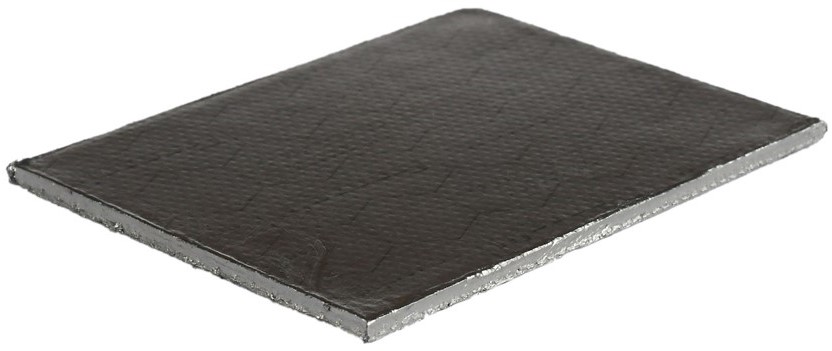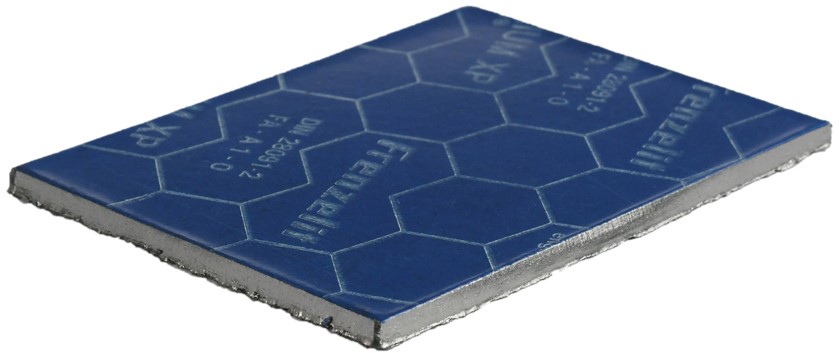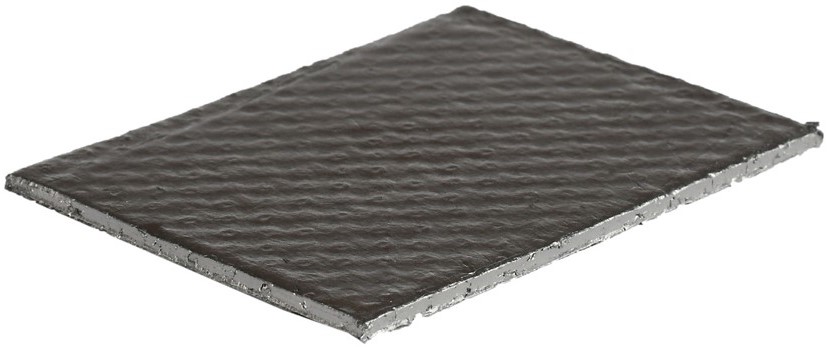Graphite seals
Graphite gaskets are a separate group of gasket materials, which are distinguished from the group of fibrous materials and elastomers primarily because of their wide temperature range. Graphite gaskets are suitable for use at temperatures ranging from -240° C to +550° C, which is why graphite gaskets are considered both cold-flexible and high-temperature gaskets . For this reason, the gasket material has particularly excellent thermal properties, which means that this material is used in a wide range of industries. In addition, the sealing material has many positive properties, such as good thermal conductivity and a variety of resistances to diverse media.



Available graphite materials at Rehm Dichtungen Ehlers GmbH
Graphite as a sealing material is available to us, Rehm Dichtungen Ehlers GmbH, in different variants. Since graphite is a very sensitive material, it is usually used in reinforced form in combination with metal inserts. The simplest way to reinforce the material is to use graphite gaskets with a smooth metal insert. The reinforcement increases the strength of the flange gasket. As a further design, we are in possession of graphite gaskets with tanged sheet metal. In this case, the tanged sheets, which are produced with needle tools, are rolled onto both sides of the graphite foils. Finally, we have graphite gaskets with expanded metal insert. This ensures the highest pressure and temperature properties. Excellent media resistance and high safety reserves, even with alternating loads, characterise this quality.
Graphite grades
Graphite with skewer plate
Technical data sheet:
Graphite with smooth sheet
Technical data sheet:
Pure graphite
Technical data sheet:
The manufacturer Frenzelit also has graphite grades with an expanded metal insert, which we can also use to manufacture your flat or flange gasket. The Frenzelit graphite grades we stock are the materials Novaphit SSTC and Novaphit SSTC TA-L, both of which belong to the Novaphit material series. Both materials consist of a high-quality expanded graphite combined with an acid-resistant expanded metal insert.
The properties of graphite as a sealing material
The basis of graphite gaskets are large-flake natural graphites, which are further processed with the help of mechanical, chemical and thermal cleaning processes. This results in the essential properties of the end products. The use of oxidising acid mixtures results in the production of graphite intercalation compounds. These intercalation compounds can in turn be expanded to high temperatures by means of shock-like heating. The expandate is then pressed into the final product using mechanical pressure and thermal treatment steps.
Graphite as a sealing material combines a multitude of positive properties, which is why it has proven itself as a versatile sealing material in various industries. The thermal properties of the material are particularly noteworthy. Graphite gaskets have high temperature stability and good thermal conductivity. The main reason for this is that under the influence of temperature, there is no embrittlement, structural change or separation of components of the material. This means that creep or flow of the flange gasket can be ruled out. The operating temperature range of flat gaskets is between -240° C and +550° C, depending on the purity. For this reason, graphite gaskets belong to the group of high-temperature gaskets.
In addition to the above-mentioned thermal properties, gaskets made of graphite have very good chemical resistance. As a result, it can be stated that flat gaskets made of this material can be used for a wide range of different media at a wide temperature range. Accordingly, a largely universal chemical resistance can be assumed, almost at the level of PTFE. Graphite seals are therefore suitable for handling aggressive media such as solvents, acids, alkalis and coolants, hot and exhaust gases as well as heat transfer oils. Since the sealing material has an increased resistance to steam, it can be used for sealing in pipelines and boilers. In principle, resistance to ageing can be assumed. However, the inevitable oxidation under higher temperatures means that the long-term suitability of the flange gasket made of this material is impaired.
Furthermore, gaskets made of graphite have good plastic and elastic deformability, which means that unevenness and roughness of the flange can be compensated. This is also guaranteed at high operating pressures, e.g. when used in fittings and sight glasses. Thus, gaskets made of this material are not only flexible to low temperatures, but also have an almost unrivalled adaptability. It is a fact that the sealing material also has very good mechanical behaviour at higher temperatures.
Furthermore, gaskets made of graphite have good plastic and elastic deformability, which means that unevenness and roughness of the flange can be compensated. This is also guaranteed at high operating pressures, e.g. when used in fittings and sight glasses. Thus, gaskets made of this material are not only flexible to low temperatures, but also have an almost unrivalled adaptability. It is a fact that the sealing material also has very good mechanical behaviour at higher temperatures.
Finally, the good technical tightness at low surface pressure should be mentioned, which leads to excellent sealing performance and predestines the material for use as a sealing material.
On the other hand, the rather low mechanical tensile and bending properties are disadvantageous, although these can be improved by using different metal inserts. The combination of graphite with metal reinforcements has a significant influence on the improvement of the sealing properties, the leakage behaviour as well as the tensile and bending stresses just mentioned.
The advantages and material properties of graphite at a glance
Flat and flange gaskets made of graphite are primarily characterised by the following advantages:
- Long-term stable compression and recovery behaviour even under high temperature loads
- Good ageing resistance
- Very good chemical resistance to a wide range of different media
- Very good thermal properties (-240° C up to +550° C)
- High adaptability to uneven sealing surfaces
In summary, graphite seals are a technically superior product solution that provides a durable application solution, especially in applications with higher temperature influences. This increases plant safety and makes a sustainable contribution in terms of cost savings.
Applications of graphite gaskets
Due to the described universal chemical resistance as well as the thermal properties of the material, graphite gaskets are considered an excellent sealing material and offer versatile application possibilities in the most diverse industries.
Typical fields of application in which our manufactured flat and flange gaskets made of graphite are used are primarily the chemical and petrochemical industries, gas supply, refineries, power plants, waste incineration plants and boiler houses. They all combine high temperature requirements with resistance to aggressive media and high operating pressures.
Graphite gaskets are used to seal pipelines, pumps and valve housings. We are also familiar with their use in exhaust pipes.
We will be happy to answer whether graphite is also suitable for your purposes. Please contact our customer service, who will be happy to provide you with comprehensive advice.


